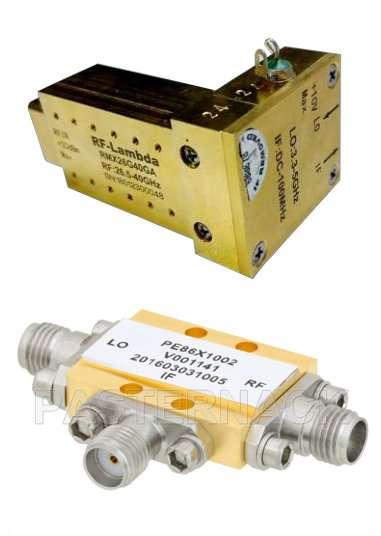MixersRF Mixers from Pasternack and RF LambdaA Frequency Mixer is a 3-port electronic circuit that uses a diode network. It converts RF to a lower IF (or baseband signal) for easy signal processing in receivers. And it converts IF frequency (or baseband signal) to a higher IF or RF frequency for efficient transmission in transmitters. Two of the ports are input ports and the other port is an output port. The ideal Mixer mixes the 2 input signals such that the output signal frequency is either the sum (or difference frequency) of the inputs. Double & Triple Balanced Mixer differences:
Double Balanced Mixer: Triple Balanced Mixer: |
 |
PasternackPasternack carries the following products in their RF Mixer category; Double Balanced Mixers, IQ Mixers, Triple Balanced Mixers and Waveguide Converter Mixers. All have a multiple models in various frequency ranges. Pasternack RF Mixers are in stock and ready for shipment the same day you order them. RF LambdaRF-Lambda is an ISO 9001:2008 and ITAR registered internationally renowned company specialized in the development and manufacture of Military and Airborne Grade RF/Microwave components for the wireless infrastructure, satellite communications, medical and defence sectors. Features: Milimeter-Wave Harmonic Mixer 26.5 - 40GHz Downloads |

